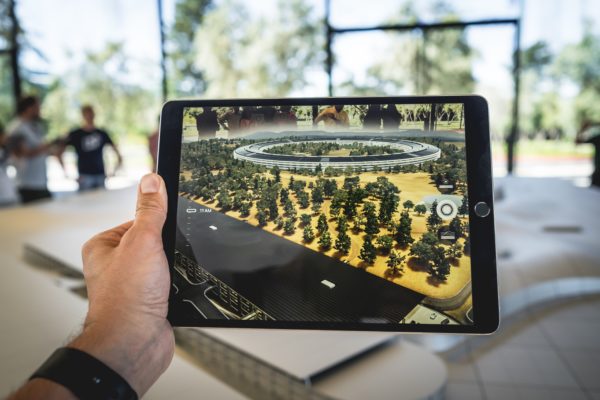This technology could help us save energy, live independently, and pinpoint our whereabouts in times of crisis.
Imagine walking into a room, and the automatic lights turn on immediately.
There’s no need to do that awkward hand wave to activate them, and no fumbling for the light switch.
How did they know you were coming?
The floor told them.

Or, more accurately, the floor sensed your footsteps and triggered an action: to turn on the lights.
This is one possible use for intelligent surfaces – walls and floors that respond to human presence.
Gigantic sensors in the built environment
Intelligent surfaces work like a big skin. They can detect changes in pressure, heat and moisture. In doing so, they can sense the presence or movements of a person within a space.
They can do this thanks to a carbon alloy called graphene. Having only been discovered in 2010, it’s a relatively new material to the advanced manufacturing world.
But thanks to its superior properties, it’s already gained the title of ‘wonder material’.
Imagine Intelligent Materials – an advanced manufacturing company based in Geelong – has been investigating the wonderous properties of graphene, and how to best apply it to different surfaces.
They approached the Mediated Intelligence in Design (MInD) Lab at Deakin University for guidance: how could intelligent surfaces be best used in the built environment?
Professor Tuba Kocaturk, Director of the MInD lab, says that the potential for this technology is enormous. It’s particularly exciting because it hasn’t yet been used in the building sector.
One possible application is to install it in cultural institutions, like museums. Curators could track how long visitors are spending at certain exhibits, and the number of patrons that pass through.

They could even be installed on public transport, so that passengers could easily find a vacant seat.
The surfaces also have potential as energy-saving tools. As with the lights example above, the surfaces could sense when the room was empty, and switch them off.
And when the surfaces detect that there are more than 30 people in a room, it could trigger an additional action: to increase the heating or air-conditioning. As people leave the room, it would turn them down.
Valuable tech for real life
The possibilities for intelligent surfaces are seemingly endless. But perhaps the most impressive are the ways it could be applied to health and safety.
Let’s say that a building was equipped with the surfaces, and that building caught on fire. It would be possible to find out if people were still trapped in the building, and if so, exactly where.
Imagine being able to give that information to emergency services in times of crisis.
But the MInD Lab are interested in one application in particular: installing the surfaces in aged-care facilities.
If the floors could detect changes in someone’s movement patterns, or sensed a sudden, forceful increase in pressure, it could register that a resident has taken a fall.
From there, it could alert a nurse to come and assist.

Professor Kocaturk says that the key to making these surfaces so useful lies in these extra actions. After all, “just because someone is walking on a sensor, it doesn’t make it intelligent.”
“It’s a technological innovation, but that doesn’t automatically make it a valuable product for real life. You have to use it in a context that turns it into actionable information.”
Similarly, this technology could be applied to homes. If family members could be alerted when their elderly relative falls, they could immediately respond.
Intelligent surfaces could help an ageing population to live independently for longer.
Graphene-enabled sensing provides a number of advantages over more conventional sensing technologies, due to being low-cost, easy to maintain, and having superior sensing capabilities.
Unlike conventional technologies, it causes no concern for privacy, as it captures no visual or personal information. It simply monitors changes in movement, temperature and humidity.
More ambient, less intrusive
One of the beauties of intelligent surfaces is that they are unobtrusive.
Professor Kocaturk says that they fit under the broad umbrella of ‘ambient intelligence’, a concept that seeks to make technology much less daunting.
“It’s about getting rid of the computers, the hardware, and embedding intelligence in a space. This is a completely new approach for sensing.”
Ideally, ambient intelligence improves the way we interact with a space – without us even realising it’s there.

“We want people to feel more in tune and comfortable in the presence of technology. Right now, it’s not the case for many ordinary people.”
This would be especially useful in a place like an aged-care facility, where the technology needs to be non-intrusive: functional, but not flashy.
“This gives a lot of comfort to potential users and in aged care especially. This is a very sensitive issue, not only for the elderly, but also for their relatives who are paying for these services.”



